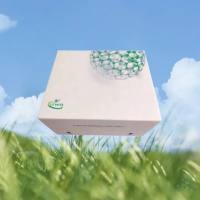Assay for theTransendothelial Migration of Human Natural Killer Cells
The natural killer (NK) cell has been shown to be important in mounting a host’s initial response to many types of invaders,
such as certain types of viruses, bacteria, and protozoa, and to be involved in the control of neoplastic growth and in allograft
rejection (1
,2
). However, before any leukocyte can perform its function in any tissue, it must first traverse the barrier of endothelial
cells lining the blood vessel wall. This chapter describes a method with which to study this transmigration and the surface
molecules of the NK cell that might be involved. Unlike monocytes, neutrophils, or T cells, NK cells comprise a very small
percentage of peripheral blood leukocytes, only 10% of the lymphocyte fraction. This makes it a challenge to measure their
transmigration, as transmigration assays usually necessitate a large number of a pure population of cells. The method described
here uses a population of cells enriched for, but not exclusively, NK cells, and measures the NK cell transmigration using
phenotypic analysis of the starting and transmigrating populations. The technique involves culturing endothelial cells in
tissue culture well inserts that contain pores through which the NK cells can fall after their transmigration across the endothelial
cell monolayer. The NK cells are enriched using negative selection exclusively, so as not to activate them by engaging their
cell surface molecules, which could potentially change their pattern and extent of transmigration. For these experiments,
we use the operational definition of NK cells as CD56+
/ CD3-
cells (1
,3
).
![预览]()






